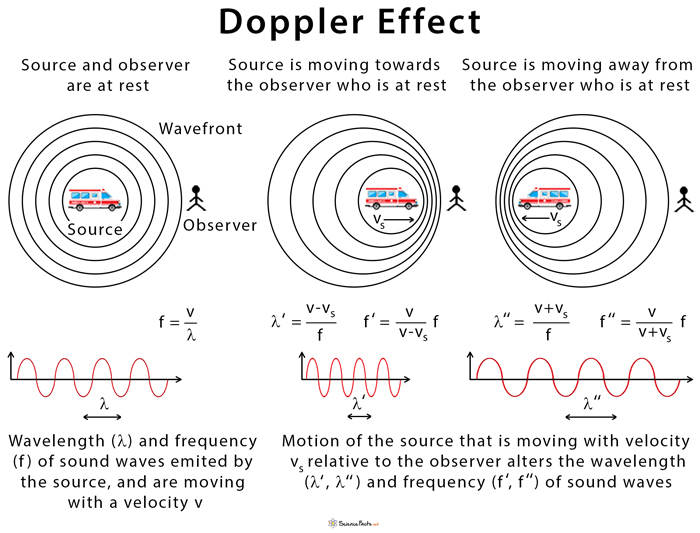The history of the Doppler effect goes back to 1842 when Austrian physicists Christian Doppler first observed it. While observing distant stars, Doppler described how the color of starlight changed with the movement of the star.
Relativistic Doppler Effect
The relativistic Doppler effect is applied when astronomical objects, like stars and galaxies, move with a velocity comparable to the speed of light. In such a case, the effects described by the special theory of relativity is taken into account. Relativity modifies the Doppler effect due to time dilation. The modified relationship must be consistent with the Lorentz transformation.
In Doppler radar to determine the speed of distant moving objectsIn weather observation to characterize cloud movement and weather patternsIn police speed detectors to check the speed of passing vehiclesMedical imaging also makes use of the Doppler effect to monitor blood flow through vessels in the body
